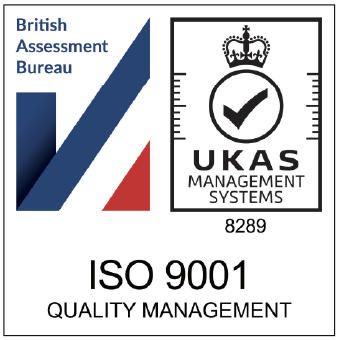As an eCommerce store, one of the worst things that can happen is running out of stock. Not only will you lose sales, but running out of stock can damage your reputation, SEO and more. If you want to ensure this never happens to you, read 3PL’s guide to managing your stock levels effectively now…
Why is it important to manage your stock levels?
Aside from the reasons outlined above, there are numerous reasons that effective stock or inventory management is important.
Not only will effective inventory management ensure you always maintain stock of popular and fast-selling products, but it can also prevent you from having too many items in stock, thus incurring storage costs.
Having too much inventory can also mean that you have more capital tied up than you can afford, which can result in inventory becoming outdated and unsellable and more. It can also result in you requiring more warehouse space than you need; again, reducing the profitability of your operations.
So, whether it’s saving you from having too much or too little stock, effective inventory management is important.
How to determine the optimum stock levels for your eCommerce business
Okay, so we’ve seen how important good management of stock levels is. But, how do you go about actually doing it? What does optimum stock or inventory management look like?
Well, there are a number of ways of determining the optimum stock levels for eCommerce stores that we’ve detailed below.
Understand production lead times
By understanding production lead times you can make better decisions regarding when items of inventory need to be re-ordered.
For example, if you know that some of your items of inventory take several weeks to be produced, then you’ll be able to factor this into your inventory reordering schedule.
In addition to the amount of time it takes for your items of inventory to be produced, you should also consider related factors such as the amount of time it takes for those items to be shipped from the factory to your warehouse, any shutdowns that the factory may make (e.g. for holidays) and how it long it takes for you to process and store new items of inventory.
Safety stock
Safety stock refers to additional inventory that you set aside for unexpected circumstances. It effectively acts as a reserve in case you receive a sudden surge in orders, or experience a significant delay in receiving new inventory.
So, it can be helpful to ensure you always have some safety stock in your inventory – the trick is to ensure you have the right amount of safety stock.
To calculate the right volume of safety stock to keep in your inventory you should take into account the maximum daily sales of an item, its maximum lead time, its average daily sales, and the average lead time in receiving new stock.
Use demand forecasting
One of the most important things you can do to ensure you maintain optimum stock levels is to use demand forecasting.
Demand forecasting allows you to look ahead and anticipate which particular items within your inventory are going to be popular, which items may be slow sellers and more. From there, you can make better decisions regarding your inventory management.
There are a number of different types of demand forecasting which can be useful for eCommerce retailers including economy-based forecasting and time-based forecasting.
Guide – to find out more, read our guide to demand forecasting.
The best techniques for managing your eCommerce stock levels effectively
Now that we’ve examined how you can determine what your optimum stock levels should be, let’s take a look at some best practices that’ll help you manage your eCommerce inventory in general
Audit your inventory regularly
If you don’t actually know what items you’ve got in your inventory, then it can be impossible to manage your stock at optimum levels.
There are a number of ways in which you can audit your stock levels, but one of the simplest ways to do so is rolling stock takes, where stock takes are carried out on a regular basis.
Whilst they do involve more work than traditional year-end stock takes, they do provide you with up-to-date visibility of your inventory and any associated issues.
Create a contingency plan
How would you cope if one of your key suppliers went out of business? What if the production quality of your items suddenly dropped drastically? What would you do if material shortages in a particular location meant you had to change your supplier at short notice?
The answers to all of these questions and more should be included in a contingency plan.
By creating a contingency plan you’ll be better able to deal with any major issues and find alternative solutions quickly. After all, failure to have a contingency plan in place can throw your inventory management efforts into chaos…
Build solid relationships with suppliers
Related to the above point, you should try and build solid relationships with your suppliers.
Doing so will not only mean you’ll be given advance notice of any potential supply issues, but you’ll be able to work collaboratively with them on things like product improvement, product innovation, and more.
Aside from avoiding problems, building close relationships with suppliers can also bring benefits. For example, if you’re a long-term valued customer you may be able to access volume buying discounts, be the first to access new products and be able to set up better creditor terms.
Use an inventory management system
With the right type of inventory management software, it’s possible to gain a highly-accurate view of your current inventory, as well as automating many tasks (such as product reorder points) to not improve not only improve the accuracy of your stock management, but make it more efficient too.
Outsource your inventory management
If you really want to make the management of your stock levels as efficient and effective as possible, then it can be a good idea to outsource it to a specialist.
Companies such as 3PL can manage your inventory on your behalf, providing you with a digital dashboard with real-time visibility of your inventory.
Not only can outsourcing your inventory management to a third-party be more efficient, but it can also allow you to cut or reduce costs on things like warehousing space and inventory staff.
Outsource your inventory management to 3PL today
Do you want to manage your stock levels effectively, whilst saving time and money? Then consider outsourcing your inventory management to 3PL.
Our award-winning inventory management services are used by eCommerce companies big and small alike.
Speak to 3PL about outsourcing your inventory management now
For more eCommerce inventory management, fulfilment and logistics advice, read the 3PL blog…
What Is the Best Way to Manage and Keep Control of My Inventory? | Guide to SKU Management: eCommerce Best Practices | The Key Advantages of Using a Third Party Logistics Provider
Speak to 3PL about your eCommerce order fulfiment
It’s time to supercharge your ecommerce brand business and overtake your competitors. Speak to 3PL today and find out how we can take your ecommerce fulfilment to the next level.


